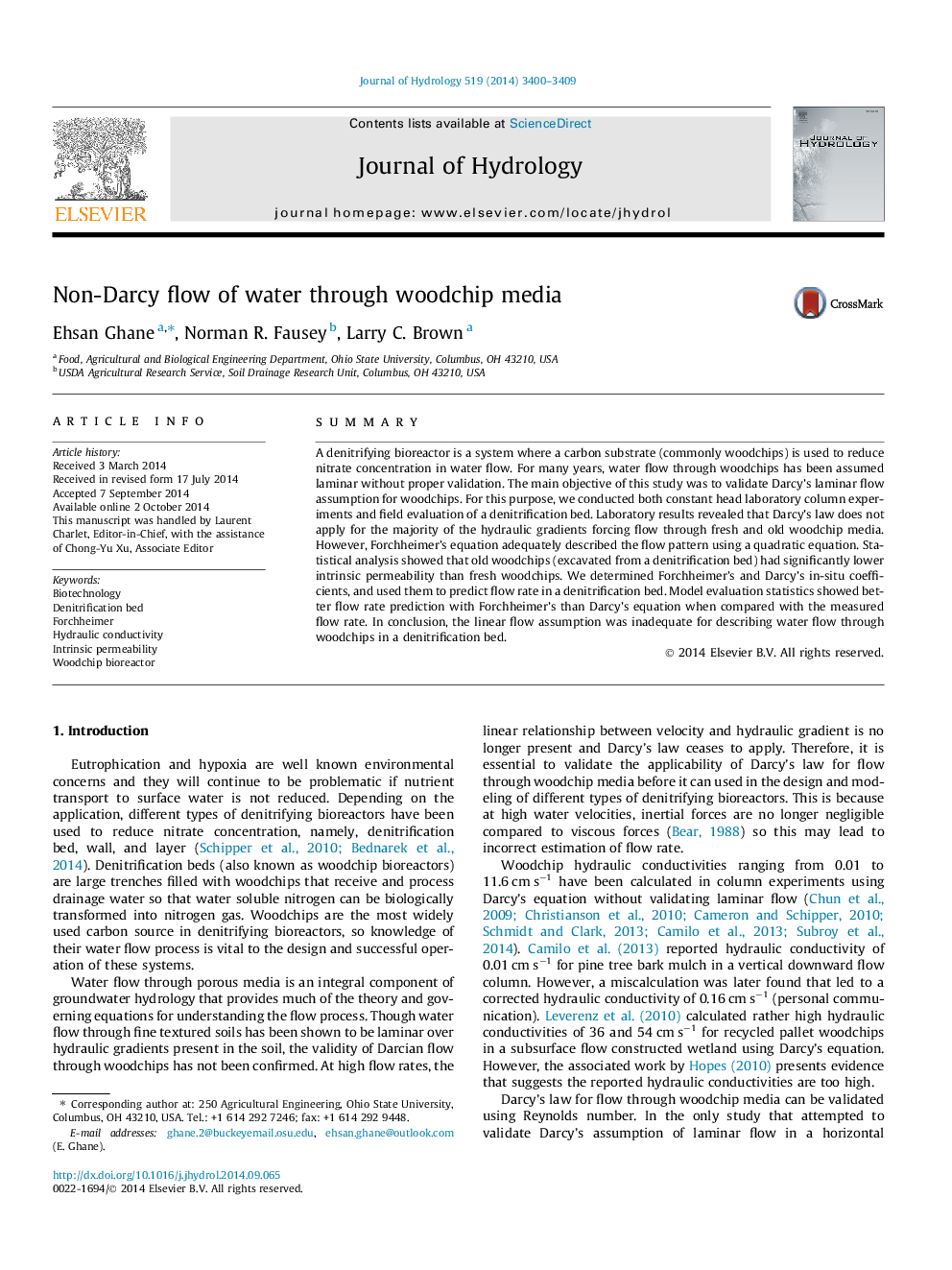| کد مقاله | کد نشریه | سال انتشار | مقاله انگلیسی | نسخه تمام متن |
|---|---|---|---|---|
| 6412250 | 1332897 | 2014 | 10 صفحه PDF | دانلود رایگان |
• Flow through woodchip columns was dominantly non-Darcian.
• Forchheimer’s equation adequately described water flow through woodchip columns.
• Degraded woodchips had lower intrinsic permeability than fresh woodchips.
• In-situ flow rate prediction was better with Forchheimer’s than Darcy’s equation.
SummaryA denitrifying bioreactor is a system where a carbon substrate (commonly woodchips) is used to reduce nitrate concentration in water flow. For many years, water flow through woodchips has been assumed laminar without proper validation. The main objective of this study was to validate Darcy’s laminar flow assumption for woodchips. For this purpose, we conducted both constant head laboratory column experiments and field evaluation of a denitrification bed. Laboratory results revealed that Darcy’s law does not apply for the majority of the hydraulic gradients forcing flow through fresh and old woodchip media. However, Forchheimer’s equation adequately described the flow pattern using a quadratic equation. Statistical analysis showed that old woodchips (excavated from a denitrification bed) had significantly lower intrinsic permeability than fresh woodchips. We determined Forchheimer’s and Darcy’s in-situ coefficients, and used them to predict flow rate in a denitrification bed. Model evaluation statistics showed better flow rate prediction with Forchheimer’s than Darcy’s equation when compared with the measured flow rate. In conclusion, the linear flow assumption was inadequate for describing water flow through woodchips in a denitrification bed.
Figure optionsDownload high-quality image (135 K)Download as PowerPoint slide
Journal: Journal of Hydrology - Volume 519, Part D, 27 November 2014, Pages 3400–3409
